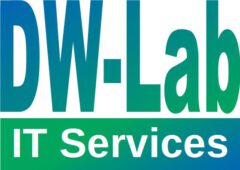This blog was first published on Service Management 360 on 30-Oct-2013.
http://www.servicemanagement360.com/2013/10/30/it-monitoring-necessary-or-just-nice-to-have/
Why do I so often see poorly managed system environments in small and medium businesses?
Well, there are multiple reasons for that:
-
They are not aware that they deeply depend on reliable IT services.
-
IT is not their core business.
-
They don’t know what to take care of, and how to do it.
Monitoring is often seen as a nice-to-have discipline as long as IT service outages do not cause any business-relevant losses. This is often achieved by minimizing the dependencies on IT services even if this “backup scenario” is inefficient and cost intensive.
I’ve seen businesses who print every incoming email. The reason for that? Well, the email system might go down, which would prevent the company from getting any work done. Having every communication outside the IT systems protects them in the event of an outage, or so they believe. The vision of the paper-free office – forget about it!
Why don’t they introduce a monitoring solution to achieve more reliable IT services? Let’s do a quick review of the main reasons:
-
Complexity
Monitoring requires a complex infrastructure, which has to be maintained. It requires deep knowledge of the monitoring mechanisms and the monitored applications, and the achieved results have to be frequently reviewed and amended. -
Lack of knowledge
What should be monitored? Which components should be under investigation? What thresholds should be set? All of these questions are absolutely valid and require time-consuming answers. And there are no “correct” answers. But there is experience in the market, and it is ready to be used. -
Time consumption
Small IT departments are not able to dedicate a team of people to perform professional IT monitoring. There are lots of things to do in such small operation centers, and watching a monitor wall all day is completely illusive. And to be honest, it is not a full-time job, because the number of systems is not large enough. -
Monitoring is too expensive
Well, cost is really the killer in every discussion. The ramp-up costs are too high. The products are too expensive. The implementation effort at the beginning is unaffordable.
But having said all that, is it now time to leave the room and tell my customers: “Yes, you are right, IT monitoring is for large businesses only”?
I think we have to address the above inhibitors very carefully and show up with alternatives for the small and medium business. Our customers’ businesses are too valuable, and unreliable IT services should not be allowed to set these services at risk.
Monitoring as a Service
As mentioned in the blog post linked above, I see the Monitoring as a Service delivery model as the best choice to cover all these challenges. But what should it look like?
First of all, we have to keep all the complexity out of sight of the service requester (that is, from you as the customer). The monitoring should just happen. The customer requests monitoring for its business services (emailing, customer portal and so on) and the service provider has to deal with it. The service provider has to have the knowledge, not the business owner.
Second, the service provider has to take care of the customer’s systems during business off-hours, to prevent system outages during normal operations, when the systems are being used frequently. This has been often seen in the past as one of the main inhibitors for small businesses. Even the system are not actively used, they still are doing background work, like database reorganizations, data backup and other administration stuff.
And now the third aspect, the investment. Customers expect to have managed availability and performance with low ramp-up costs and a quick initial implementation phase. This is only possible with service providers who have real solutions available that focus on their customers’ needs and the services these customers use. That means that industry-specific solutions are required to cover the different markets.
Below I’ll present an example scenario to illustrate these ideas.
Sample from the car manufacturing industry
A supplier in the car manufacturing industry is tightly connected to its main customer sharing IT services with him. To get connected to the principal customer’s systems this supplier has to have its own IT systems. Additionally, other specialized IT systems are on premise to serve the daily business processes, including:
-
Accounting (for example, SAP)
-
Billing (for example, SAP)
-
Emailing (for example, Lotus Notes)
-
Phone systems (for example, Ericson)
-
IT network (for example, CISCO)
The supplier’s IT systems are essential to deliver all required parts to its principal customer in the required just-in-time chain. Any failure in this process might lead to significant penalties to the supplier. The Monitoring as a Service provider should have artifacts available to quickly monitor the health and availability of theses infrastructure components and the IT services implemented on top of it:
-
Infrastructure monitoring
-
SAP monitoring
-
-
Lotus Notes monitoring
-
Network monitoring
-
Service monitoring
-
Accounting
-
Billing
-
Phone line availability
-
Applications on the principal customer’s systems
-
All these monitors require specialized, industry-specific know-how but are similar for all suppliers in this industry. The solutions could be provided in monitoring packages, including technical resource monitoring, process monitoring and availability tracking. Additionally, these packages should include reporting features for reviewing the achieved results.
Conclusion
By ordering Monitoring as a Service, small and medium businesses might overcome today’s existing inhibitors for implementing a strong control of their IT systems. With SmarCloud Application Performance Management the required products are there. Within IBM’s business partner organization and service providers, the infrastructure to deliver these services is also available. It is now your turn to act. What stops you from doing so?
